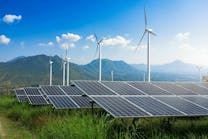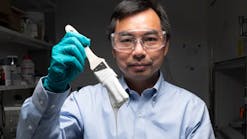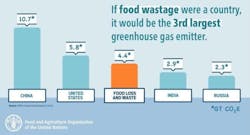Any serious discussion about sustainability must include strategies for reducing waste.
The old adage to "Reduce, Reuse, Recycle" known as the Three R's eventually evolved to Four Rs: "Reduce, Reuse, Recycle and Recover", and is now up to Five R's: "Rethink, Reduce, Reuse, Recycle and Recover."
Generally, when we hear this, we’re probably thinking about all kinds of solid waste. Now, the United Nations Environment Programme (UNEP) Food Waste Index Report 2021 informs us that if all the food that is wasted and rotting away in landfills was actually a country, it would be the third biggest source of greenhouse gas (GHG) emissions in the world!
According to the report, an estimated 931 million metric tons (1026 US tons) of food waste was generated in 2019, 61% of which came from households, 26% from food service, and 13% from retail operations. All told, the report suggests that 17% of total global food production may be wasted.
Think about that.
Wasting that much food at the consumer, food service, and retail level, significantly impacts the climate, with an estimated 8-10% of global GHG emissions associated with food that is not consumed. Interestingly, none of the Nationally Determined Contributions to the Paris Agreement even mention food waste.
By comparison, a recent study published in the journal Environmental Research Letters estimated that aviation contributes only 2.4% of global annual CO2 emissions, most of it from commercial travel, significantly less than that from food waste.
In addition to its contribution to climate change and pollution, food waste also burdens waste management systems and exacerbates food insecurity. For these reasons, the UN’s Sustainable Development Goal 12.3 aims to reduce food waste and food loss by 50% by 2030.
And it’s not just food that’s a problem.
The UN Alliance for Sustainable Fashion, reports that the average consumer buys 60% more pieces of clothing than 15 years ago, and keeps these pieces for only half as long. As a result, according to the UN, the fashion industry is the second-biggest consumer of water, and is responsible for 2-8% of global carbon emissions. Part of these emissions come from pumping water to irrigate crops like cotton; oil-based pesticides; machinery for harvesting; and emissions from transport. So the fashion industry is responsible for 24% of insecticides and 11% of pesticides.
Also according to the UN, although the fashion industry is valued at around $2.4 trillion and employs over 75 million people worldwide, it nevertheless loses about $500 billion of value every year due to the lack of recycling because clothes are thrown into landfills before ever being sold.
So, next time you clean out the refrigerator to get rid of the spoiled food that you never ate, or you dig into your closet to throw away the old suit that you haven’t worn in 10 years and that is now a moth motel "unsuitable" for charity, stop and think about all of those R’s. They’re not just about plastic bottles anymore!
#####
A regular contributor to HPAC Engineering and a member of its editorial advisory board, the author is a principal at Sustainable Performance Solutions LLC, a south Florida-based engineering firm focusing on energy and sustainability. He can be reached at [email protected].










